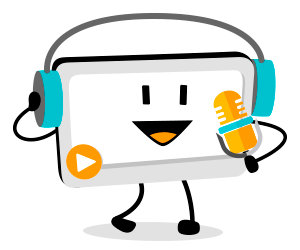How Do Explainer Videos Suit Different Learning Types
Based on the belief that individuals process information in unique ways, learning types usually fit into one of four categories: Visual, Auditory, Reading/Writing, and Kinaesthetic. According to this VARK model, an individual has one of these as a preferred learning style but may also have more than one.

Visual learners prefer seeing and observing. They seem to understand information better when it’s presented in a visual way. Therefore, visual learners naturally do well with pictures, diagrams, and videos.
Auditory learners are good listeners and seem to learn best when the subject matter is reinforced by sound. Videos, audiotapes, and music are all helpful in engaging auditory learners.
Kinaesthetic learners or “tactile” learners learn through physical activity – practical hands-on experiences is a must for these learners who learn best when they can actively “do” rather than passively “observe”.
Reading/writing learners prefer to learn through written text. They prefer using words (reading and writing) and tend to excel in activities that involve research and writing.
Wouldn’t it be great if you could accommodate all of these different learning types with one strategy? Well, actually, it is possible… by means of explainer videos!
Visual Learners
Explainer videos definitely suit visual learners! The use of characters, images, colours, maps, flow charts, or spider diagrams to organize content in an explainer video all accommodate visual learners! The moving images trigger the mind by attracting attention and then engage visual learners on a deeper level.

Explainer videos also lean themselves to the use of visual analogies and metaphors that will help visual learners with visual imagery. Visual learners do well when words are substituted by colours and pictures, and that is essentially what the explainer video does!
Visual learners also learn through storytelling, which can be very effectively used in an explainer video. The imagery in an explainer video prompts a student to visualize further in order to enhance the explanation in their mind’s eye. So even an animated explainer video with very basic or limited images greatly benefits the visual learner.

Auditory Learners
Explainer videos also suit auditory learners! For auditory learners, knowledge is transferred with maximum impact through listening – to words, music, sounds, and even background noise. It is, for example, recommended that auditory learners listen to music as they go over lesson material. The audiovisual nature of an explainer video naturally appeals to the auditory learner, as the learner has to listen to the explanation whilst watching the imagery. The use of relevant background sounds in the explainer video further appeals to the auditory learner and contributes to their readiness to learn. (The audio input serves to augment the learner’s ability to focus, learn, and generally improves memory.) In addition, auditory learners can benefit from having a classroom discussion after watching an explainer video to expand upon their understanding of a topic.

Kinaesthetic Learners
Explainer videos suit kinaesthetic learners beautifully too! It is when they are provided with hands-on experiences that these learners learn optimally. So, kinaesthetic learners do especially well with interactive explainer videos! But that is not all: Educationalists recommend that kinaesthetic learners teach other class members some lesson content. Another recommendation is to provide kinaesthetic learners with opportunities to somehow “act out” content material, as they learn from dramatizing concepts. These recommendations can be combined through the creation of explainer videos! If the kinaesthetic learner is involved in the explainer video creation process they will absorb the content of the explainer video effortlessly. Kinaesthetic learners learn through physical activity. So, let them make explainer videos because they learn best when they are actively involved!
Read/Write Learners
Explainer videos even suit read/write learners! How? Well, explainer videos do not necessarily only make use of images – they may make use of a combination of text and images. They may even only make use of text… The text benefits the read/write learners. But even if an explainer video does not include text, as read/write learners watch it they can write down brief notes, or key words or key concepts, to review later. Read/write learners can also be provided with relevant reading material about the topic involved and afterward watch the video to support what has been read.

Moreover, read/write learners can also greatly benefit from the video creation process. They can get involved by reading (or researching) the relevant information and writing the script to an explainer video. When they re-word main ideas and principles they gain a deeper understanding. The same happens when they make use of research material like diagrams, charts, and graphic organizers to put these into text format for an explainer video script.
The VARK model acknowledges that, for most people, multimodality is the norm – even though we may prefer a particular type, most of us learn through all learning types. Most people, therefore, benefit from audiovisual stimuli. So, using explainer videos for different learning types can prove beneficial for your eLearning strategy.